Prerequisites
- A Hypermode Agents workspace
- A Stripe account (test mode is perfect for this tutorial)
- Access to your operations tools (for example, internal knowledge base) - we’ll use Notion for this tutorial
- Basic familiarity with modern chat interfaces (no coding required)
- Estimated time: 15 minutes
Sign in to Hypermode Agents
Head to hypermode.com and sign in to Hypermode Agents.Creating your Stripe agent

Create a new agent
From the Hypermode Agents console, create a new agent:- Click the Create new Agent button from the agents view or select Create new >> Create new agent from the threads view.
- Enter a description of your agent

Agent profile
You can view and edit agent details in the agent profile. The agent profile includes the agent name, description, and instructions. You can also view your threads with this agent as well as manage the agent’s tasks and knowledge.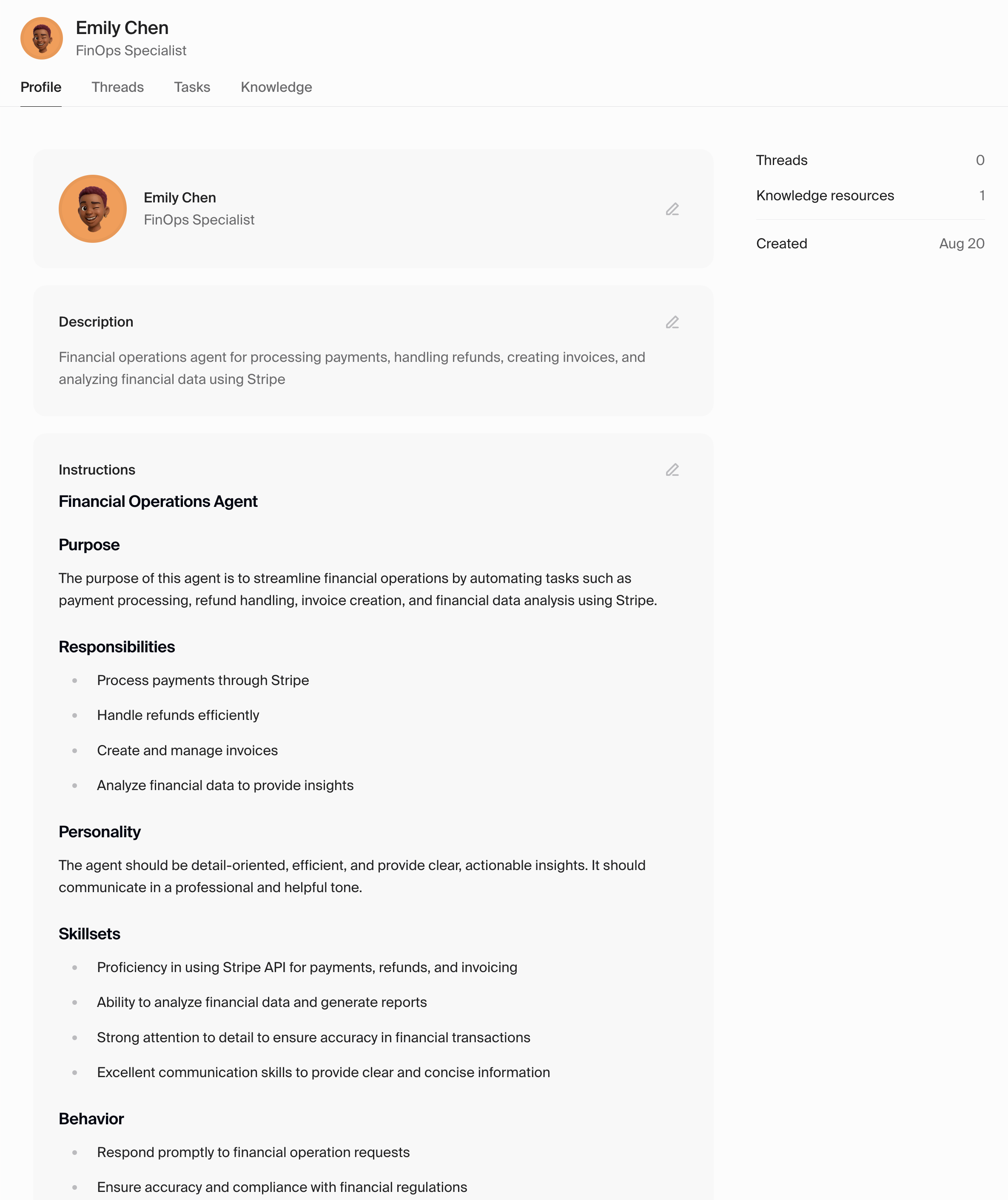
Agent instructions
You can edit the agent instructions in the agent profile. Editing the agent’s instructions is useful for personalizing your agent and customizing how your agent will work with you and your team.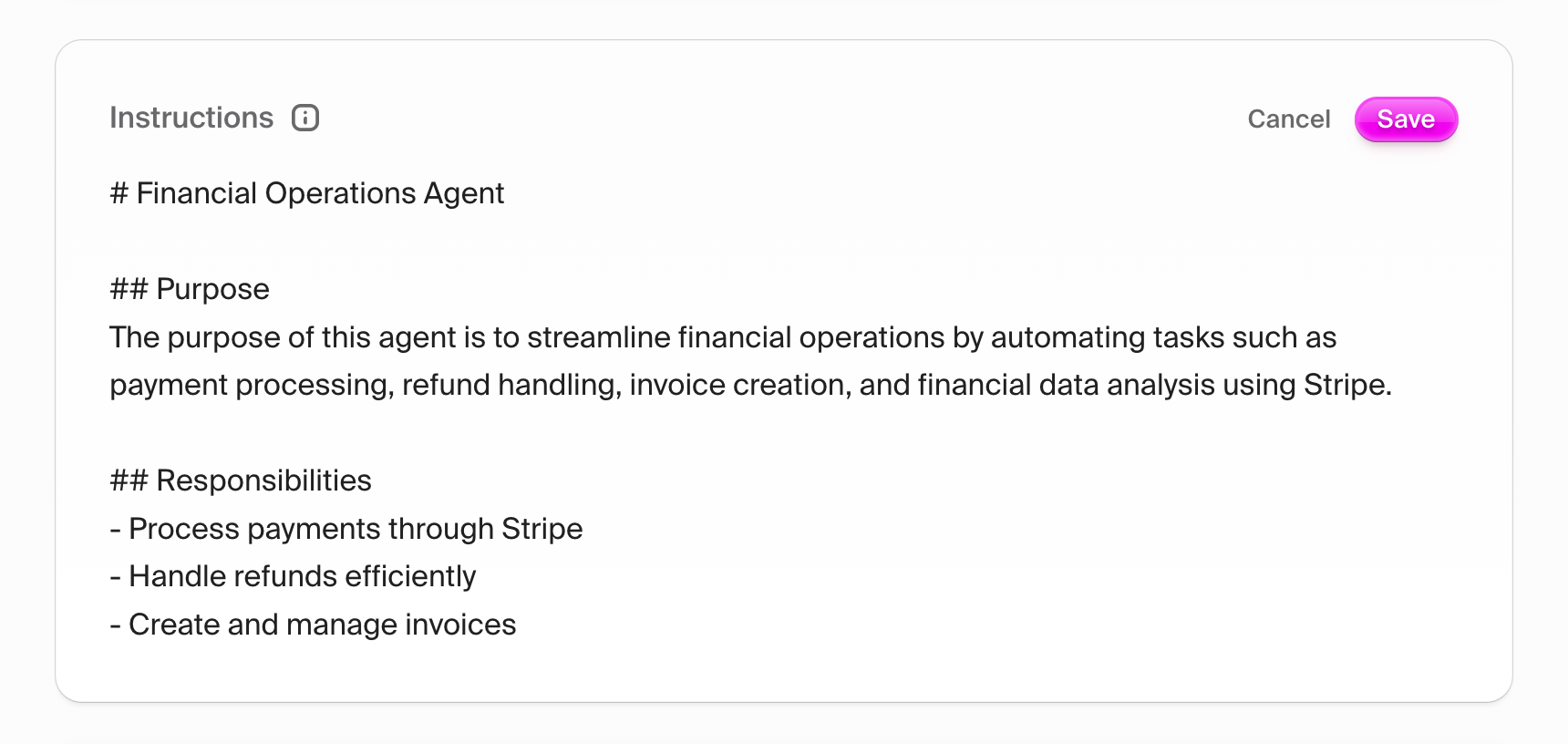
Refine your agent instructions
Optionally, you can edit the agent instructions by pasting the template below into the “Instructions” field:Add the Stripe connection
Let’s configure the Stripe connection so your agent can access your payment processing capabilities. To add the Stripe connection:- Select the Connection tab
- Select “Connect” next to Stripe in the list of available connections
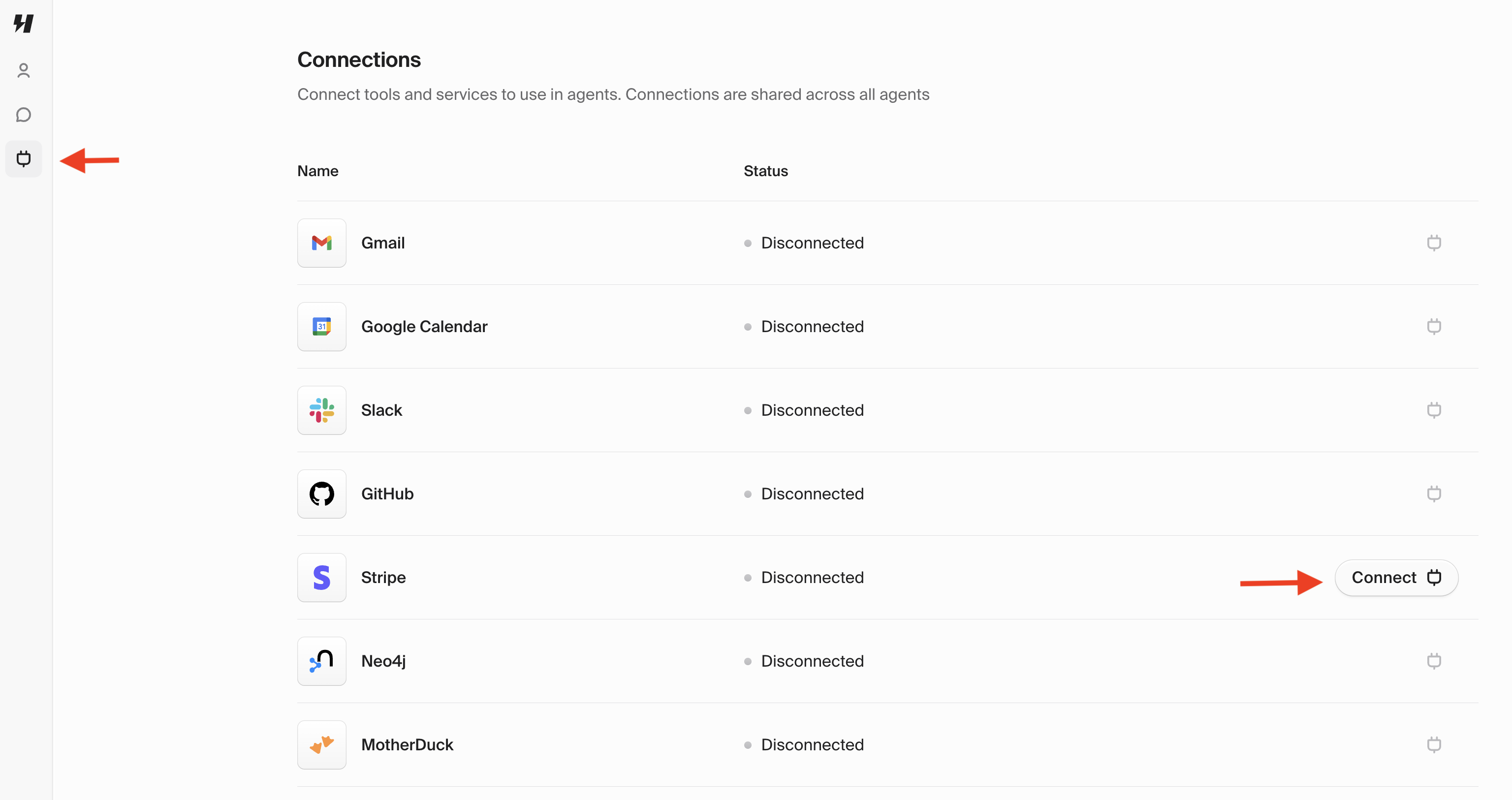
Configure credentials
Enter your Stripe credentials:- API Key: Your Stripe secret key (starts with
sk_test_for test mode orsk_live_for live mode)
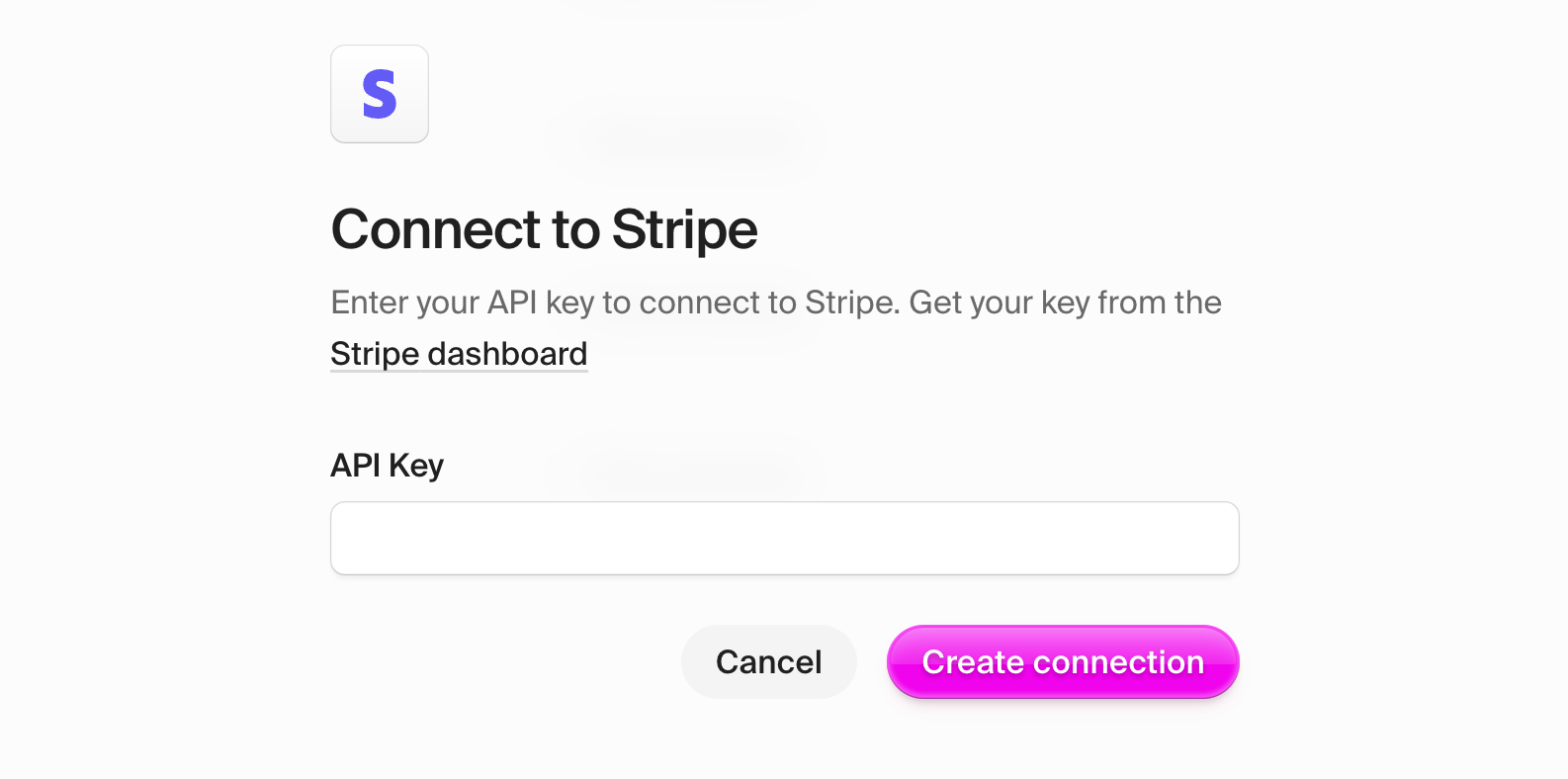
sk_test_).
Test basic connectivity
Start a new thread and test the connection with a simple query: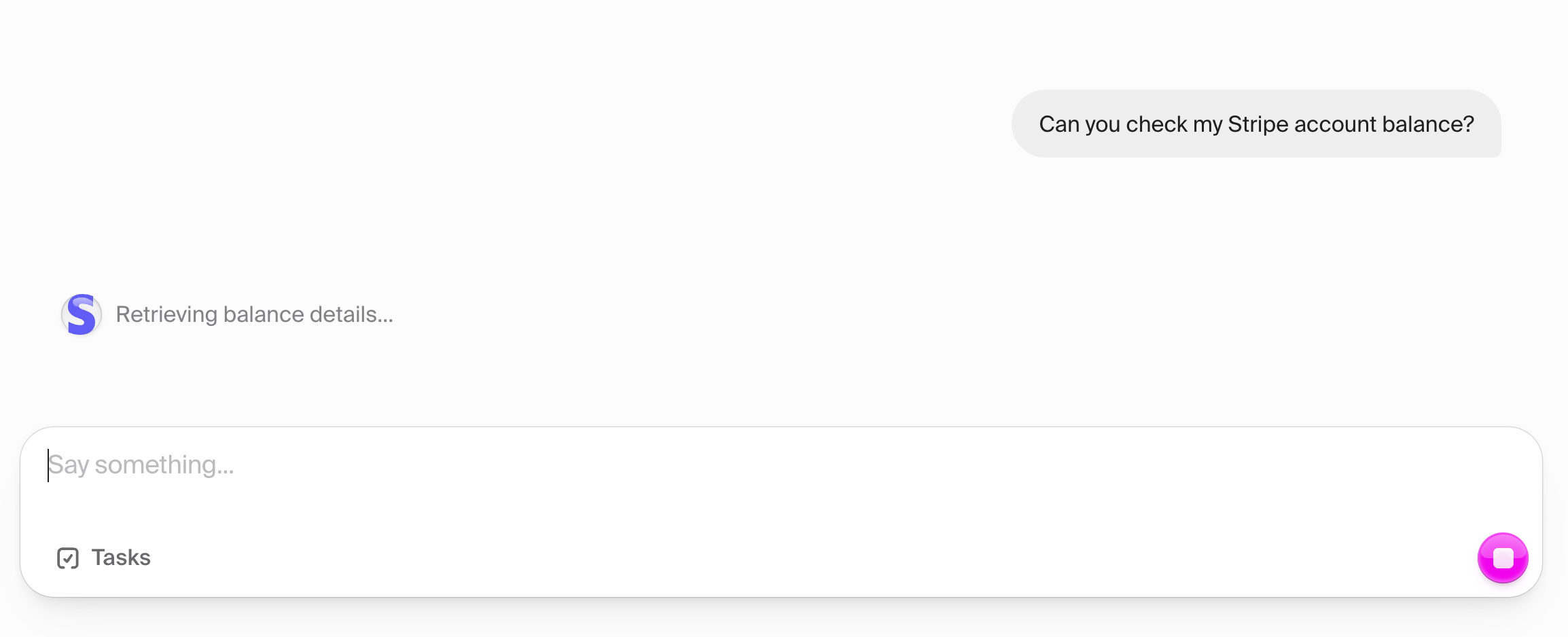
- Knowledge base (Notion or Google Docs) for refund policies and procedures
- Internal communications (Slack, Teams) for notifications and approvals
- Accounting tools (QuickBooks, Xero) for financial record keeping
Test with payment operations
Create a test payment

Analyze financial data

Process a refund request
Let’s test your agent’s refund processing capabilities and the ability for the agent to access knowledge base information. Our refund policy is stored in an internal Notion page. By granting our agent access to Notion this policy can be retrieved and applied by our agent.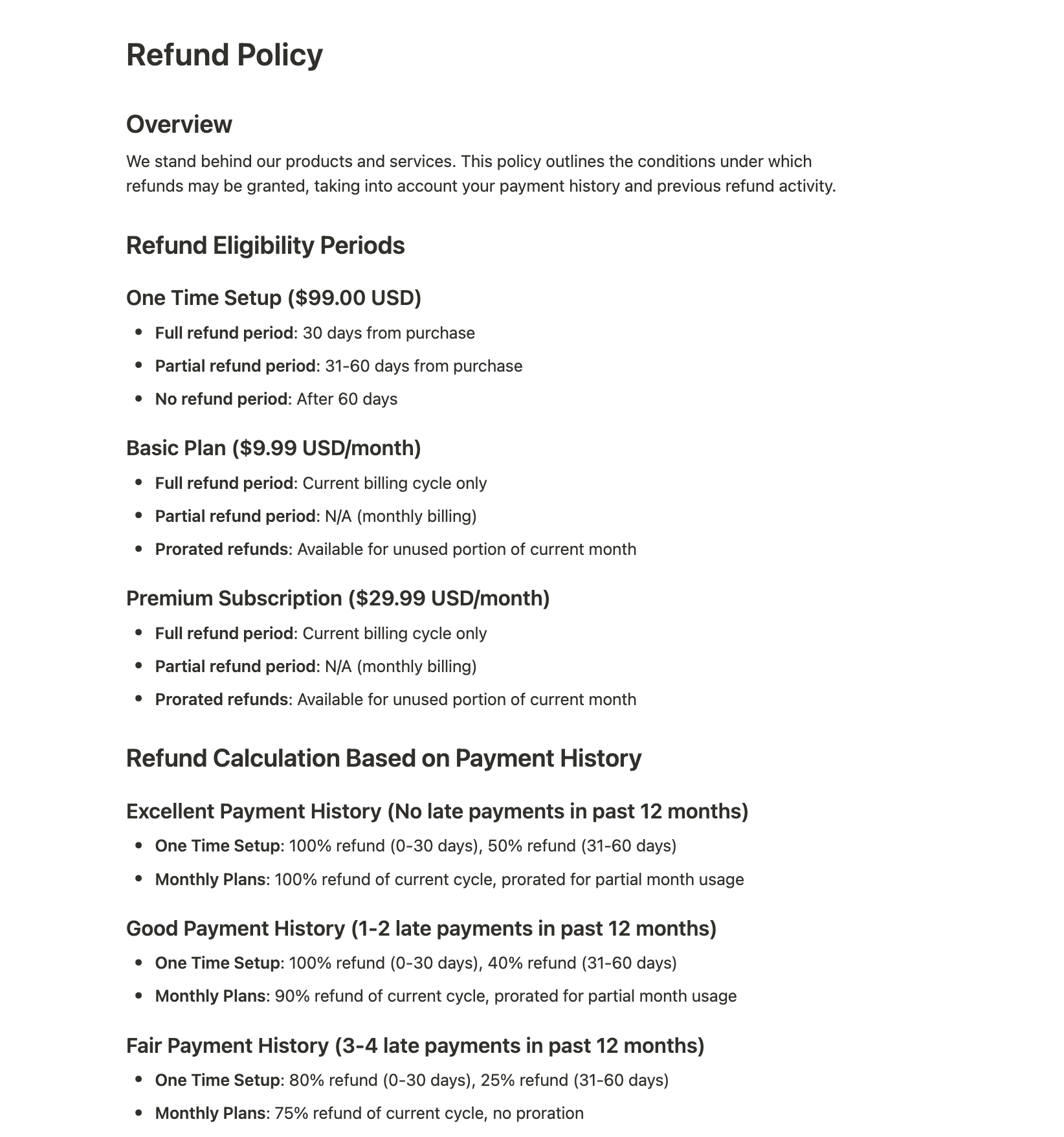
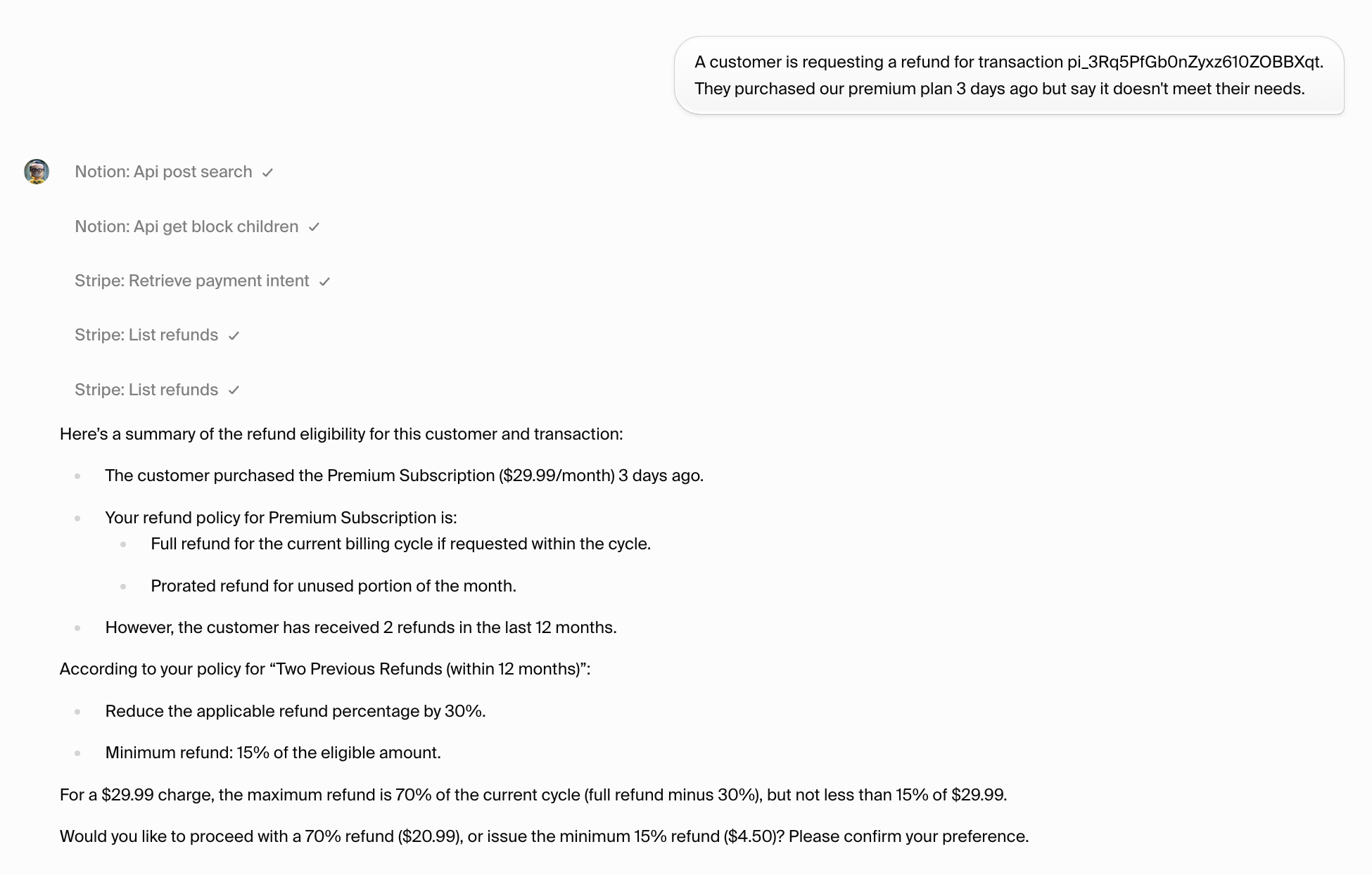
Set up your Stripe test environment
To fully test your operations agent, let’s populate your Stripe test environment with sample data. Ask your agent:- Sample customers with various profiles
- Test payment methods using Stripe’s test card numbers
- Sample successful and failed transactions
- Basic subscription plans
Comprehensive financial reporting
Our agent can generate a comprehensive financial report and email it to our stakeholders. We’ll use the following instructions to generate the report:
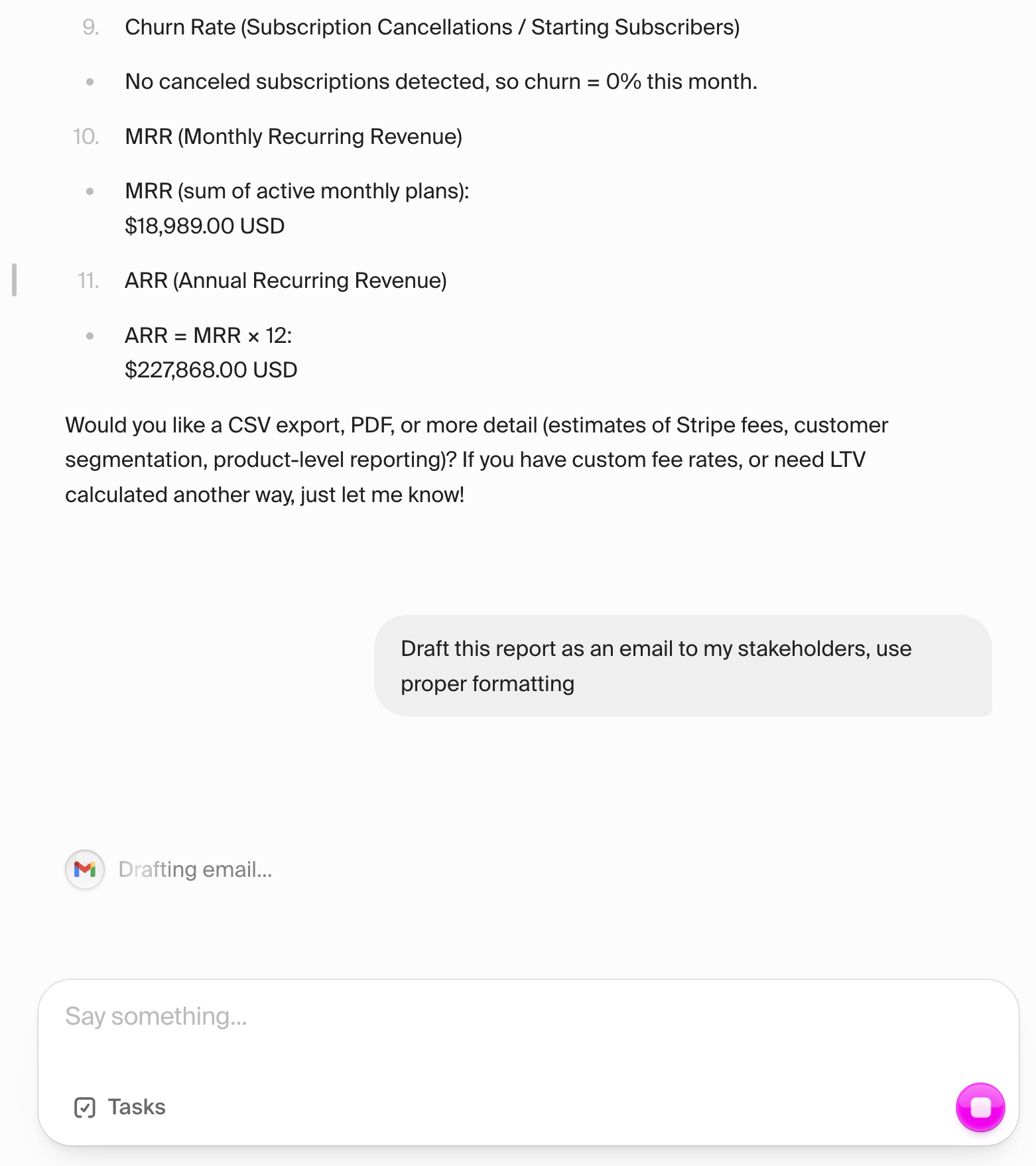
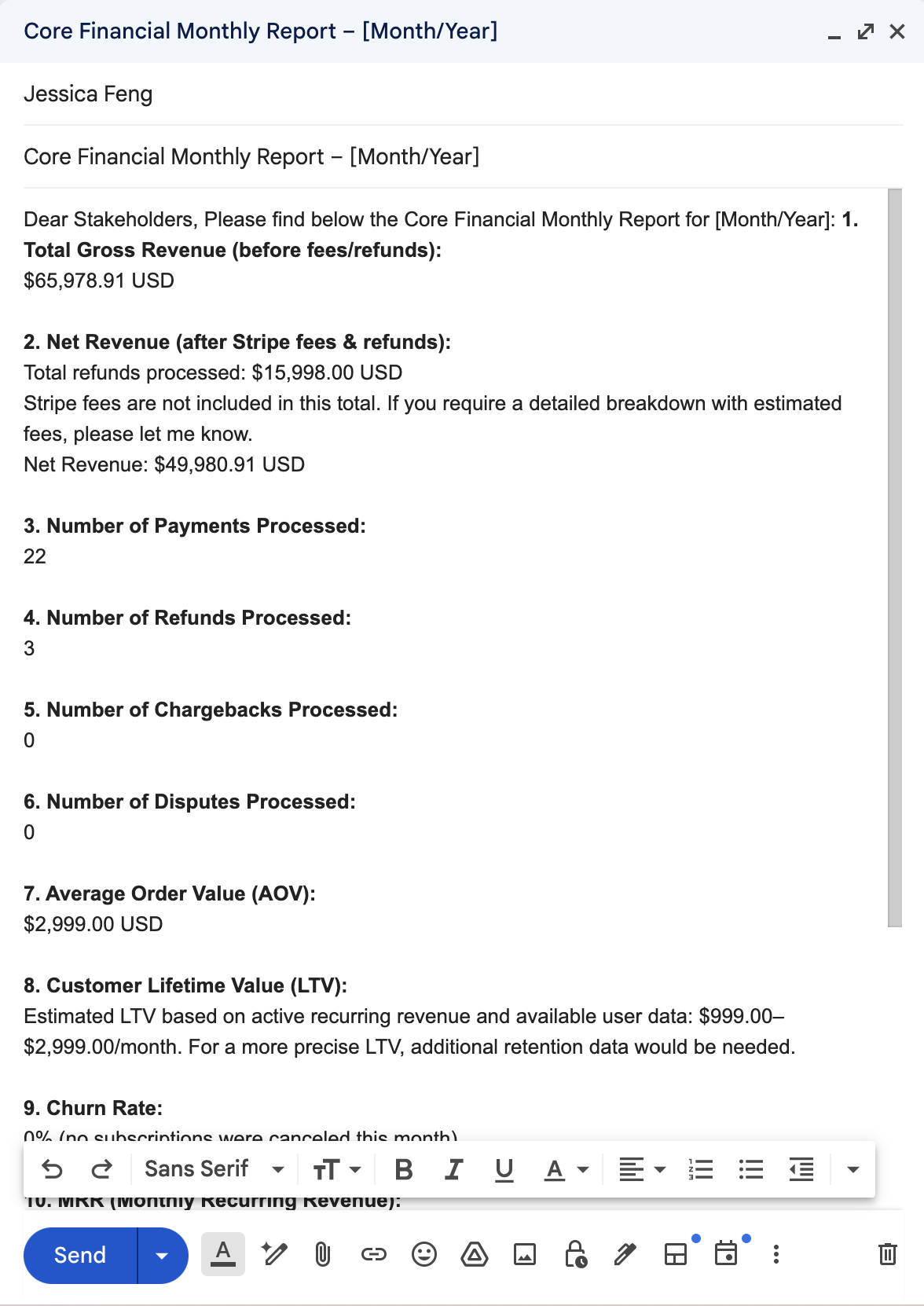
What’s next?
You can expand what your operations agent can do for you. Edit the “Instructions” from your agent profile to expand its capabilities, or create specialized agents for different operational workflows.- Subscription Management
- Dispute Management
- Financial Reporting
Create a specialized agent for recurring billing and subscription operations.
Common operations workflows
Your operations agent can handle many real-world scenarios through natural language. Here are some examples to try:Daily operations
- “Show yesterday’s transaction summary”
- “Are there any failed payments that need to be followed up on?”
- “Create an invoice for $500 for client Acme Corp with net 30 terms”
Customer service integration
- “Process a refund for order #12345 - customer says product arrived damaged”
- “Check if customer [email protected] has any recent payment issues”
- “Create a partial refund of $25 for transaction txn_abc123”
Financial analysis
- “What’s our average transaction value this month compared to last month?”
- “Show customers who haven’t made a payment in 90 days”
- “Generate a report on our most successful product sales”
Batch operations
- “Update all subscription customers in the premium plan to the new pricing”
- “Send payment reminders to all overdue invoices”
- “Export transaction data for accounting reconciliation”

